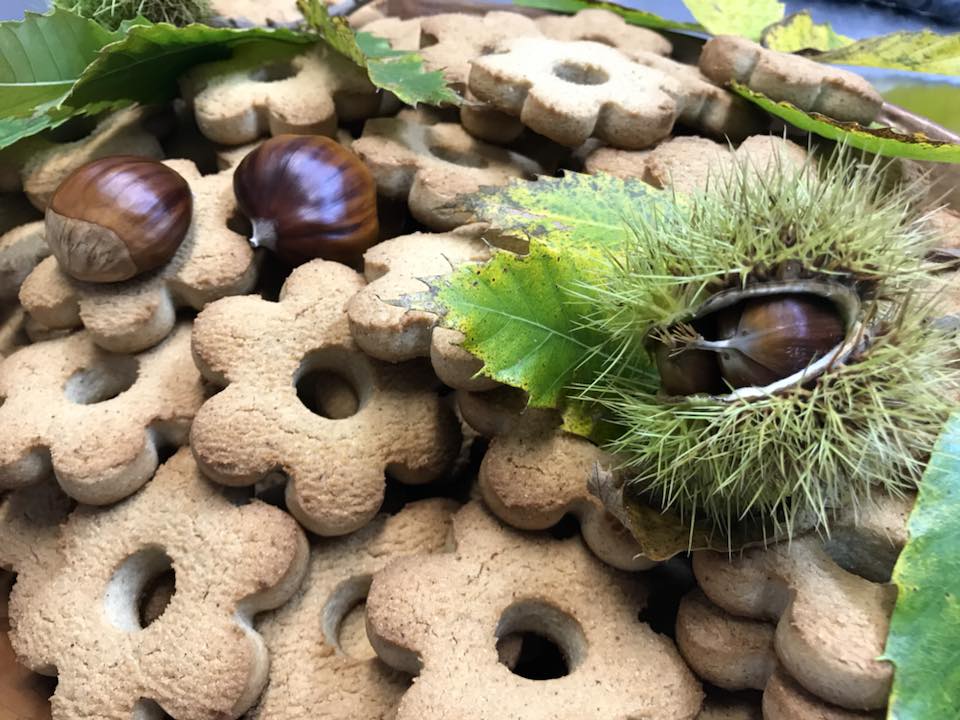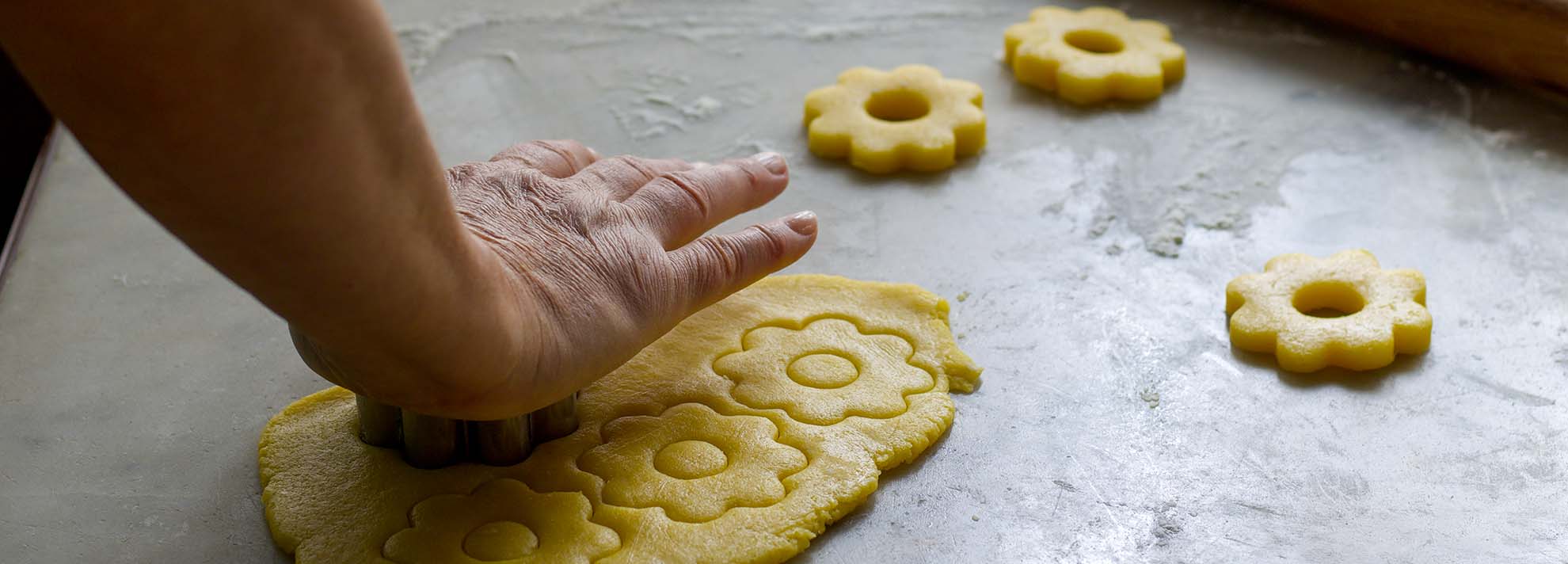The Canestrelli

Info:
Difficulty: medium easy
Prep time: 1 hour
Cook time: 20 minutes at 180°C
Serving: 4
Cost: low
Allergeni:
Please check for allergens among the ingredients in the recipe
Liguria, the land of canestrelli!
Perhaps because the canestrello invites you to complete the Liguria, a crescent of land by the sea. Or perhaps because the ancient peasant tradition loved this shape for its practicality in use and transport, stacked or gathered in sticks, ropes, or baskets. In Liguria, canestrelli have been very popular and have always been produced. They have become a delightful treat with flavour all around. They are distinguished into sweet and savory varieties.
Canestrello or canestrelletto

Canestrello di Santo Stefano D’Aveto (GE), Canestrello dell’Acquasanta (GE), Canestrelletto di Torriglia (GE) or simply Canestrello Ligure. The canestrello is a shortcrust biscuit shaped like a doughnut, approximately 10 cm in diametre with a central hole of about 3cm; its thickness is around 6-7mm. The colour is golden, and it has a crumbly and soft texture. The Canestrello dell’Acquasanta is topped with granulated sugar on its upper surface.
Primarily characteristic of the tradition of the Genoese hinterland, canestrelli are also found in the Savona and La Spezia areas, with slight variations from place to place. Documented since the 1700s, the canestrelli, whose origins are claimed by several towns in the Genoese hinterland and Lower Piedmont, are a classic sweet treat in the shape of a doughnut with a central hole.
Canestrelli are excellent for breakfast and even more suitable for an afternoon snack with tea or sweet wine. These soft and crumbly doughnut-shaped biscuits are recognised by their fluted
edges and the abundance of butter.
A son de vende reste e canestrelli…
This ancient saying demonstrates that there is also a poorer version of canestrelli, made with bread dough. Caterina Campodonico sold them at local fairs, and with the proceeds from her hazelnut necklaces and these sweets, she was able to buy herself a tombstone in the Staglieno
cemetery in Genoa, a lasting memory of her and her work.
Canestrello di Brugnato

“Suddenly I thought of the canestrelli. The canestrelli of Brugnato: large, soft, very simple sweet doughnuts, but sweet with delicious moderation, and lightly scented with anise. I realised that what I wanted was to taste them again immediately.” — Mario Soldati
Soft, honey-golden in colour, and doughnut-shaped, the Canestrello di Brugnato was probably created to make the bread that farmers took to the fields more enjoyable. It is the pride of this ancient village in the Val di Vara. During the Easter period, especially on Palm Sunday, children would bring them to church for a blessing.
The Canestrello di Brugnato is delicious and differs from the classic canestrelli not only in its doughnut shape but also in its size and ingredients, including honey and anise seeds, which give it a truly unique flavour. It is a point of pride for this ancient centre, which was granted city status as early as 999, as confirmed by an imperial diploma.
Recipe
Ingredients
500 g all-purpose flour (type “00”), 200 g sugar, 2 eggs, Anise seeds, Vegetable margarine, Water, Brewer’s yeast, Honey, Natural flavourings
Preparation
Today, this dough is made in a mixer by artisan producers. After leaving the mixer, the mixture is shaped by hand into doughnuts and allowed to rise for 2 hours in a baking tray. It is then baked in the oven at 190°C (374°F) for 20 minutes.
Canestrelli di Taggia

Crunchy, delicious, and slightly salty, the Canestrelli di Taggia are reminiscent of those from northern and central Europe. However, those produced in this location on the Ligurian coast are unmistakable for their lightness, which comes from the extra virgin olive oil made from the famous and prized local Taggiasche olives. In the past, they were made with pomace oil.
With their unique and aromatic flavour, they can be enjoyed on their own but are also excellent when paired with cured meats, cheeses, and brined olives. Between Sanremo and Taggia, they are even dipped in cappuccino at breakfast—what better way to start the day? Try it to believe it!
Every year on February 12, a day dedicated to San Benedetto Revelli, a choreographic festival lights up the ancient streets with fireworks and bonfires. This event commemorates how the saint, in the 10th century, cleverly made it seem like other raiders had already arrived, thereby
preventing the village from being looted during Saracen incursions. The festival concludes with tastings of canestrelli and anise-flavoured cookies.
Recipe
Ingredients
1 kg all-purpose flour (type 00), 100 g fresh brewer’s yeast, 250 ml olive oil, 1 glass of milk Salt to taste
Preparation
Mix the flour with the yeast, warm milk, olive oil, and a pinch of salt. Let the mixture rest under a cloth for about 1 to 1.5 hours. Then, roll out the dough into strips that are not too thin, about 20-25 cm long, and join the ends to form the typical canestrello shape. Place in the oven at 180°C (356°F) for about 20 minutes.





